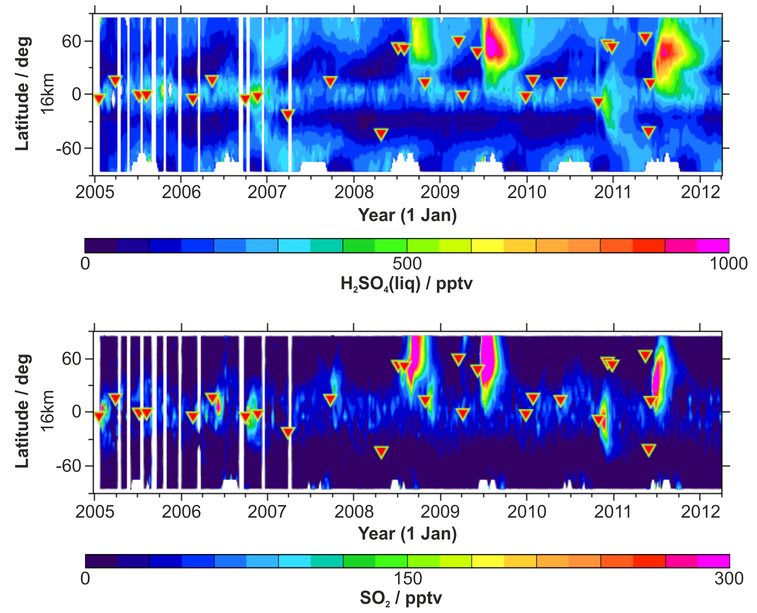The variability of the stratosheric aerosol layer is an important factor within the climate system (Solomon et al., 2011). The Figure shows global time series of aerosol concentration and of its source gas sulfur dioxide as observed by the Michelson Interferometer for Passive Atmospheric Sounding (MIPAS). The importance of volcanic eruptions (triangles) on the variability is visible. AtmoSat will open, for the first time after 2012, the opportunity to perform such measurements with a significantly increased spatial coverage and resolution. This will provide essential input parameters, like the injection height distribution and mass of SO2, for application in atmospheric modelling.
Günther et al., 2018, https://www.atmos-chem-phys.net/18/1217/2018/
Solomon et al., 2011, http://science.sciencemag.org/content/333/6044/866
The variability of the near-surface climate is most strongly influenced by the radiative effects of water vapor, ozone, and sulfate aerosols in the upper troposhere and stratosphere. To understand decadal climate variability it is necessary to quantify the temporal and spatial variability of these trace substancies and to attribute this variability to atmospheric processes such as the Brewer-Dobson circulation, long-range transport and stratosphere-troposphere exchange.
Major scientific messages in the literature:
- Ammonia / ammonium in the upper troposphere:
Ge et al., PNAS, 2018
http://www.pnas.org/cgi/doi/10.1073/pnas.1719949115
Kirkby et al., Nature, 2011
https://www.nature.com/articles/nature10343 - New sources of ozone-depleting substances:
Montzka et al., Nature, 2018,
https://www.nature.com/articles/s41586-018-0106-2 - The recovery of the ozone layer is delayed:
Ball et al., Atmos. Chem. Phys., 2018,
https://doi.org/10.5194/acp-18-1379-2018


